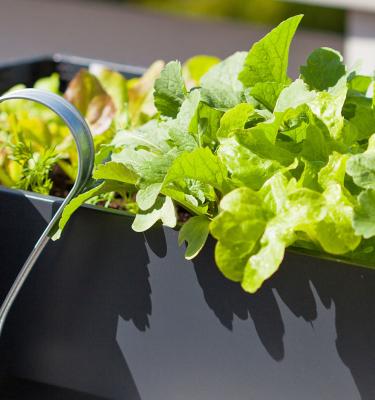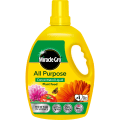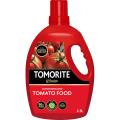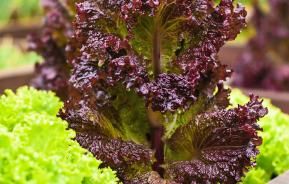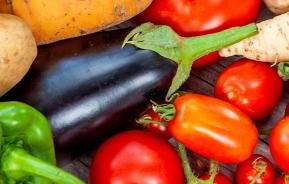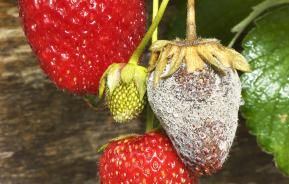Choosing a pot, container or planter
With many people wanting to have a go at ‘growing your own’ but worried that they don’t have enough space, this article will give you advice and tips on making the most of a small space using all sorts of pots and containers whether you have a tiny garden, a sunny patio or just a balcony. Any container will be suitable as long as it is big enough for the crop you want to grow, has or can have drainage holes put in and is filled with a good compost.
Terracotta containers look good, but they do dry out quicker than plastic ones and can be very heavy to move around. You can line them with an old compost bag with holes punctured at the bottom to stop them drying out. Many places sell colourful recycled plastic pots which are lighter and good at retaining water although in a hot summer the plants can overheat. Metal containers can look very smart but again I would advise lining with plastic to help with moisture and overheating.
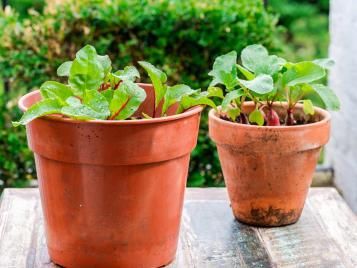
You can grow lettuces, salad leaves and quick-maturing salads in shallow window boxes, but for most fruit and veg usually the bigger the container the better. It will provide a good cool root run and need watering less frequently. For instance, French beans are better in 15-20cm (6-8in) pots; carrots, parsnips, beetroot and other root vegetables need a pot that is deep enough for their roots – or you could look for round or stump-rooted varieties that won’t need such a deep root run.
Fruiting vegetables, such as tomatoes, aubergines, peppers and cucumbers, do really well in containers, as the slightly restricted root run helps encourage better flowering and heavier cropping.
The following pot sizes work best for these popular vegetables:
- Peppers 20-23cm (8-9in) pots.
- Aubergines 23-25cm (9-10in) pots.
- Tomatoes 25-30cm (10-12in) pots.
- Cucumbers 30cm (12in) pots.
You can also grow in gro-bags - but be aware once the crops are reaching maturity, they will need very frequent watering. Giant planters are deeper, contain more compost, and so don't dry out so quickly.

Best compost for vegetables
As the majority of vegetables are annuals and will only be growing for a few months, any multi-purpose compost should produce tasty crops. Any that are specially formulated for fruit and vegetables will be even better and it’s always best to feed your crops once they start putting on growth, flowering and fruiting.
Best compost for fruit
As fruit trees and bushes are more-or-less permanent crops, they do better in a loam-based John Innes No.3 compost. These composts are also heavier and firmly anchor the pot in place and are especially good for tall growing crops, where the pot may get blown over in windy weather.
Top tips for growing fruit and vegetables in containers
- In order to have a successful and productive edible container garden, it is very important that you care for your plants, as they will depend on you for water and feed.
- Always aim to keep the compost as evenly moist as possible - without allowing it to dry out nor become waterlogged. Regular watering in the early morning or evening is usually the best way.
- Always use a good peat free potting compost that contains enough nutrients to feed the plants for several weeks; check the bag to see how long the compost should feed for. After that time, your plants should be fed with a plant food to keep them growing strongly and cropping prolifically. A general purpose liquid plant food is perfect for all leafy and rooting crops, whereas a high potash feed is needed for all flowering and fruiting crops.
- Feeds specifically recommended for fruit and veg are a great choice as they may contain nutrients that help promote great flavours.
- Many veg can be grown from seed but if you lack indoor space to start more tender varieties such as tomatoes then most garden centres and DIY stores offer seedling plants that are ready to be planted out as soon as the frosts have gone.
- Have a go at upcycling or recycling for a fun and quirky way to grow your own.
